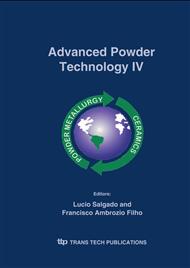p.425
p.430
p.436
p.442
p.447
p.453
p.459
p.464
p.470
Clays from Southern Brazil: Physical, Chemical and Mineralogical Characterization
Abstract:
Fore knowledge of the characteristics of ceramic raw materials is of utmost importance during the development, processing and production stages of any ceramic product. This work describes the characterization of clays commonly used in the ceramics industry. Two different clays were selected: clay A, from Tubarão-SC and clay B, from Porto Alegre-RS. Their chemical composition was obtained by X-ray fluorescence and their mineralogy by X-ray diffraction, coupled with numerical rational analysis. Their thermal behaviour was studied by differential thermal analysis and thermogravimetry. Their particle size distribution and plasticity were also determined. Clay A showed circa 47.5 % quartz (by weight), 40.2 % kaolinite and 9.9 % muscovite mica. Clay B showed a high kaolinite content (circa 72 wt.%), accompanied by montmorillonite (circa 10 %) and potash feldspar (circa 10 % microcline). Clay B was found to be much more plastic than clay A, and both are suitable for pottery, tiles and brick making.
Info:
Periodical:
Pages:
447-452
Citation:
Online since:
November 2005
Keywords:
Price:
Сopyright:
© 2005 Trans Tech Publications Ltd. All Rights Reserved
Share:
Citation:


